Source:Google.com.pk
Pencil Drawing Lessons Biography
Drawing is the backbone of art! Learning to draw will improve your painting and sculpture. It is an acquired skill. Don't worry about talent. Anyone with enough dexterity to write can learn to draw at a reasonable level. I will present a process that will enable you to draw any subject in front of you by using a system of horizontals and verticals and estimating shapes and distances. This system will enable you to work in any medium. We will begin with pencil because it makes a precise mark. Later we will draw with charcoal, and then paint. I learned this system from Abe Nussbaum, one of the best draftsmen I ever met or have read about.
Classes and books abound, but very few teach the fundamentals needed by a beginner. After completing most, you know the author knows how to do their drawings, but you really don't know more than when you started, and you still can't do what you want. Once you learn this system you won't have that problem. You will actually be able to draw what you see. This information is not readily available, so I decided to include it on my web site.
Here's a glowing testimonial. Abe asked me to draw a picture at my first lesson. It is on your left below. After he saw how well I was doing, he drew the layout on your right. (I darkened these pictures to make them easier to see.) I had read many books on drawing, and you can see how much they helped me. The drawing page shows the Russian priest I did during the first lessons. That's quite an improvement!!
first pencil drawing
Abe's layout
This system works well for portraiture because a painter must be able to render exactly what they see in order to capture a likeness. Formula painting (draw a circle for the head, make a line halfway down for the eyes, etc.) doesn't work for portraiture, because a formula concentrates on how subjects are the same. The very nature of portraiture is to see how this person is unique. Formulas like that can be used for cartoons. Portrait painting would not be fun if everyone looked the same. You wouldn't need a brush-just a rubber stamp.
This method is very portable, and can be done on a mountaintop, in the studio, or kitchen, without slide projectors, tracing, grids, or other crutches. The process is divided into three steps:
Layout-place your subject on the paper.
Design-pick one spot and relate everything else to it.
Finish-refine your drawing, hit your values and textures, and complete the piece.
Materials
The materials for pencil drawing are very affordable, small and portable. You need a 9 x 12" piece of masonite, a clip or two to hold the paper, a kneaded eraser, a drafting pencil, a pack of HB lead, a lead pointer, a sanding pad, and some good paper.
drawing materials
The items depicted are (clockwise from the upper left corner):
9 x 12" piece of masonite
9 x 12" piece of mat board
Drafting eraser shield
Pack of HB lead
Clip
Lead pointer
Sanding pad
Drafting pencil
Piece of kneaded eraser in aluminum foil
Kneaded eraser
Eraser shield made from tracing paper
Lessons
Drawing Page 2Drawing Page 3Color CompositionRenderingSketchesHow to Start a Picture
This system works well for portraiture because a painter must be able to render exactly what they see in order to capture a likeness. Formula painting (draw a circle for the head, make a line halfway down for the eyes, etc.) doesn't work for portraiture, because a formula concentrates on how subjects are the same. The very nature of portraiture is to see how this person is unique. Formulas like that can be used for cartoons. Portrait painting would not be fun if everyone looked the same. You wouldn't need a brush-just a rubber stamp.
This method is very portable, and can be done on a mountaintop, in the studio, or kitchen, without slide projectors, tracing, grids, or other crutches. The process is divided into three steps:
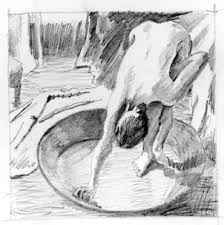
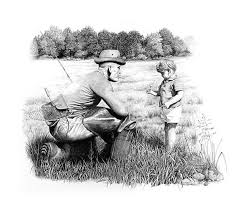
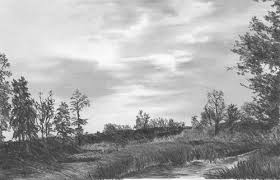

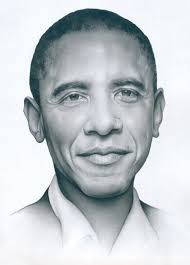


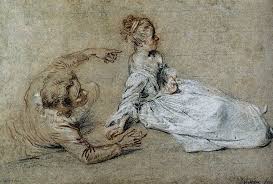

Pencil Drawing Lessons Biography
Drawing is the backbone of art! Learning to draw will improve your painting and sculpture. It is an acquired skill. Don't worry about talent. Anyone with enough dexterity to write can learn to draw at a reasonable level. I will present a process that will enable you to draw any subject in front of you by using a system of horizontals and verticals and estimating shapes and distances. This system will enable you to work in any medium. We will begin with pencil because it makes a precise mark. Later we will draw with charcoal, and then paint. I learned this system from Abe Nussbaum, one of the best draftsmen I ever met or have read about.
Classes and books abound, but very few teach the fundamentals needed by a beginner. After completing most, you know the author knows how to do their drawings, but you really don't know more than when you started, and you still can't do what you want. Once you learn this system you won't have that problem. You will actually be able to draw what you see. This information is not readily available, so I decided to include it on my web site.
Here's a glowing testimonial. Abe asked me to draw a picture at my first lesson. It is on your left below. After he saw how well I was doing, he drew the layout on your right. (I darkened these pictures to make them easier to see.) I had read many books on drawing, and you can see how much they helped me. The drawing page shows the Russian priest I did during the first lessons. That's quite an improvement!!
first pencil drawing
Abe's layout
This system works well for portraiture because a painter must be able to render exactly what they see in order to capture a likeness. Formula painting (draw a circle for the head, make a line halfway down for the eyes, etc.) doesn't work for portraiture, because a formula concentrates on how subjects are the same. The very nature of portraiture is to see how this person is unique. Formulas like that can be used for cartoons. Portrait painting would not be fun if everyone looked the same. You wouldn't need a brush-just a rubber stamp.
This method is very portable, and can be done on a mountaintop, in the studio, or kitchen, without slide projectors, tracing, grids, or other crutches. The process is divided into three steps:
Layout-place your subject on the paper.
Design-pick one spot and relate everything else to it.
Finish-refine your drawing, hit your values and textures, and complete the piece.
Materials
The materials for pencil drawing are very affordable, small and portable. You need a 9 x 12" piece of masonite, a clip or two to hold the paper, a kneaded eraser, a drafting pencil, a pack of HB lead, a lead pointer, a sanding pad, and some good paper.
drawing materials
The items depicted are (clockwise from the upper left corner):
9 x 12" piece of masonite
9 x 12" piece of mat board
Drafting eraser shield
Pack of HB lead
Clip
Lead pointer
Sanding pad
Drafting pencil
Piece of kneaded eraser in aluminum foil
Kneaded eraser
Eraser shield made from tracing paper
Lessons
Drawing Page 2Drawing Page 3Color CompositionRenderingSketchesHow to Start a Picture
This system works well for portraiture because a painter must be able to render exactly what they see in order to capture a likeness. Formula painting (draw a circle for the head, make a line halfway down for the eyes, etc.) doesn't work for portraiture, because a formula concentrates on how subjects are the same. The very nature of portraiture is to see how this person is unique. Formulas like that can be used for cartoons. Portrait painting would not be fun if everyone looked the same. You wouldn't need a brush-just a rubber stamp.
This method is very portable, and can be done on a mountaintop, in the studio, or kitchen, without slide projectors, tracing, grids, or other crutches. The process is divided into three steps:
Pencil Drawing Lessons
Pencil Drawing Lessons
Pencil Drawing Lessons
Pencil Drawing Lessons
Pencil Drawing Lessons
Pencil Drawing Lessons
Pencil Drawing Lessons
Pencil Drawing Lessons
Pencil Drawing Lessons
Pencil Drawing Lessons
Pencil Drawing Lesson
Drawing Lessons : What Is Pencil Drawing?
No comments:
Post a Comment